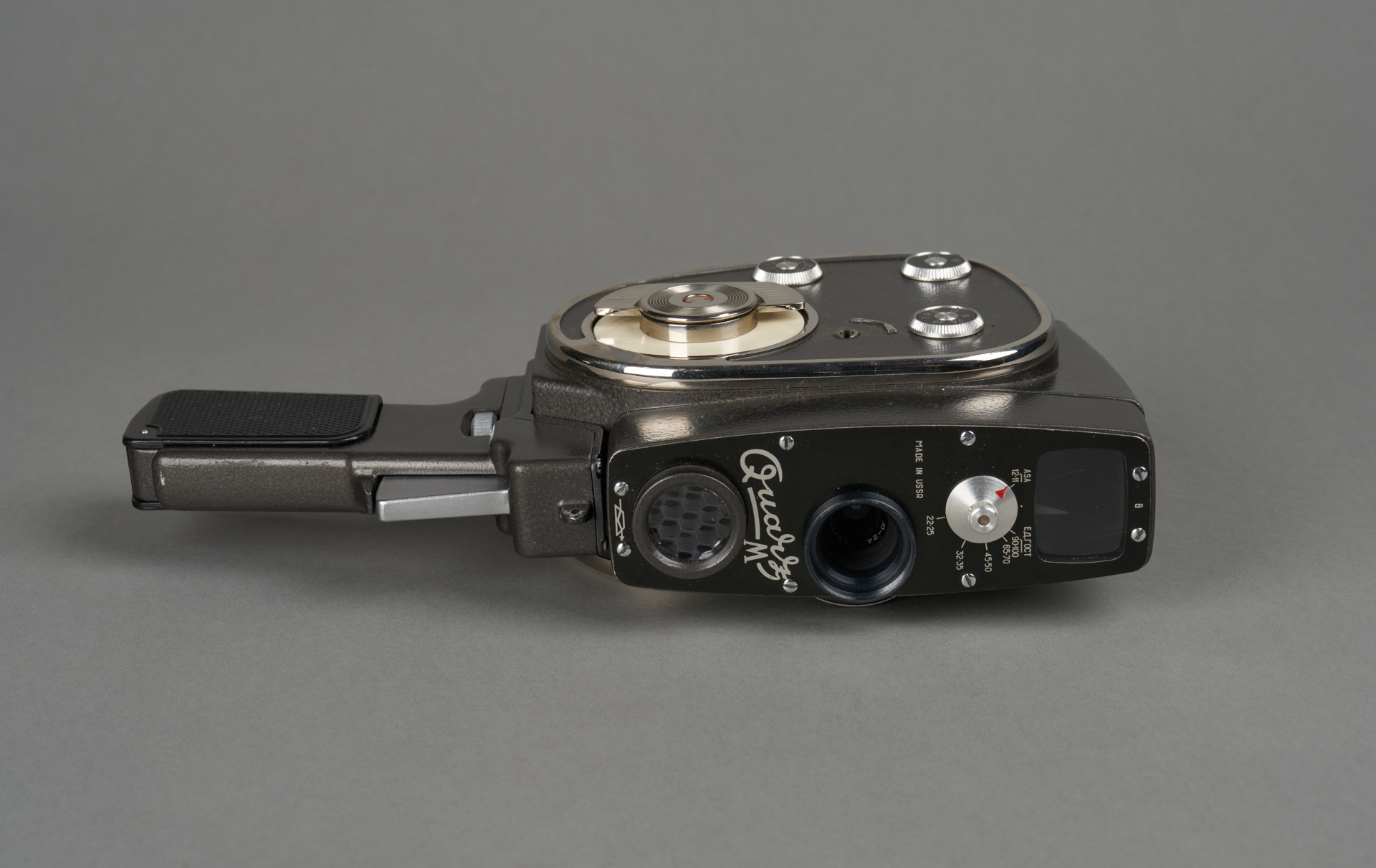
Quarz M camera
Krasnogorsk Zakłady Mechaniczne, / 1965Creator
Krasnogorsk Zakłady Mechaniczne
Time and place of creation
Time:
1965
The Quarz M amateur film camera, manufactured in 1965-1973, is a modification of the Quarz 2 camera, developed for export sales. Like the other 24 models in the series, it was intended for private use. The Quarz 2 camera is used by Filip Mosz for documenting daily life ( played by Jerzy Stuhr) – the protagonist of the Amator film of 1979, directed by Krzysztof Kieślowski.
The Quarz M camera has a built-in spring-type drive, a selenium photometer, and semiautomatic focus. It is also equipped with a non-removable lens with a focal length of 1.9-12.5 mm. Recordings were made on 16 mm (2×8) celluloid film. The camera enables recording of black and white images without sound, using different tape speeds of 12, 16, 24 or 48 frames per second, and rewinding. The Quarz M is a light camera of compact build, with a detachable handle (“pistol handle”), which houses a compartment for two filters. The camera was designed to make it light to transport and convenient in storage. On the left side of the housing is a winding key in the shape of a semi-circle, an opening for a film rewinding crank, a film length indicator, and knobs for selecting the film and speed modes. At the top of the front side is a viewfinder window without parallax matching, and below it: a rangefinder and exposure time needle, the lens with its cover, and a photocell at the base. On the right side of the housing is a handle for opening the chamber and the aperture selection lever. The entire device is covered in steel-grey enamel with a graphite tint. The finishing components – knobs, trigger, winding key, edges of the film reel container – were chrome plated, which provided a soft contrast. The effect is additionally emphasised by the elongated, rounded shape of the camera, true to the aesthetics typical of the 1950s and 1960s. Hence, the device differed from the hard-edged models of Quarz cameras designed from the end of the 1960s onwards.
There is a “Quarz M” inscription between the lens element and the photocell. It is rendered in handwriting style, in the Latin rather than the Cyrillic alphabet. The reason is that the Quarz series of cameras were planned to be exported to selected developing world countries, and mostly to the communist state markets of the Comecon. The industrial production of different states in the bloc was subject to specialisation as agreed with the Soviet planners. The idea was to ensure diversification of production and efficient trade exchange, however, in practice it led to hampering innovation of selected industries in different countries. For that reason, Poland had no native small film camera solutions, because such devices were assembled in the USSR, Czechoslovakia, and the GDR.
Author: Filip Wróblewski
Quarz M camera
Krasnogorsk Zakłady Mechaniczne, / 1965Creator
Krasnogorsk Zakłady Mechaniczne
Time and place of creation
Time:
1965











